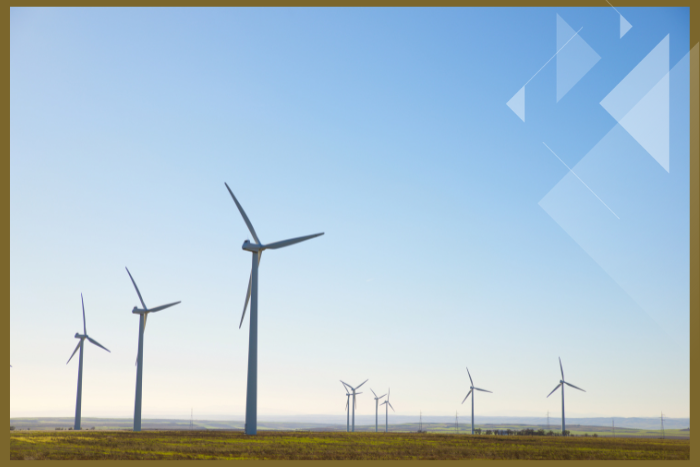China and the US remained the world’s two largest markets for onshore wind additions, followed by Brazil, Germany and India
The global wind industry installed a record 117GW of new capacity in 2023, making it the best year ever for new wind energy, according to the Global Wind Report 2024 by the Global Wind Energy Council (GWEC). The report highlighted increasing momentum on the growth of wind energy worldwide and said that total installations of 117GW in 2023 represented a 50% year-on-year increase from 2022.
The report examined four areas — investment, supply chains, system infrastructure and public consensus — which will set the conditions for wind energy growth to take off through 2030 in pursuit of the tripling renewables goal.
According to the report, 2023 was a year of continued global growth with 54 countries representing all continents building new wind power. As per the figures, the global cumulative wind power capacity passed the first 1 TW milestone in 2023, and now totals 1,021GW following YoY growth of 13%.
China’s growth underpinned a record year for the Asia-Pacific Region with year-on-year growth of 106%. The country set a new record with 75 GW of new installations commissioned which is nearly 65% of the global total. Latin America also experienced record growth in 2023, with year-on-year growth of 21%, led by Brazil’s new installations of 4.8GW, which registered as third globally. Wind installations in Africa & Middle East increased by 182% compared with 2022.
At the country level, the report found, China and the US remained the world’s two largest markets for onshore wind additions, followed by Brazil, Germany and India.
In focus: India
Globally, India ranked fourth in total wind installations, with 45 GW of installed onshore wind as of January 2024. The report said that the country is the second largest wind market in the Asia Pacific region after China.
In 2023, due to a range of policy and institutional interventions by central and state governments, over 2.8 GW onshore wind capacity was commissioned—the highest annual installation level since 2017. As per the National Electricity Plan of the central government for the period ending 2032, India’s installed wind capacity is estimated to amount to around 73 GW in 2026-2027 and 122 GW in 2031-2032.
The report estimated that there is a pipeline of more than 13 GW of wind projects in India, as of September 2023. To advance the attainment of targeted volumes of annual wind and renewable auctions, the central government has provisioned administration of auctions by public sector undertakings (PSUs) such as NHPC, NTPC, Indian Railways, SJVN and PTC. State utilities have announced standalone wind, RTC, FDRE and hybrid auctions totalling 21 GW of capacity in 2023.
The need to put wind in the sails
The report said that the wind industry must roughly triple its annual growth from a level of 117 GW in 2023 to at least 320 GW by 2030 to meet the COP28 and 1.5 degree pathway targets.
Ben Backwell, CEO, GWEC, said,”It’s great to see wind industry growth picking up, and we are proud of reaching a new annual record,” says GWEC CEO Ben Backwell. “However much more needs to be done to unlock growth by policymakers, industry and other stakeholders to get on to the 3X pathway needed to reach Net Zero. Growth is highly concentrated in a few big countries like China, the US, Brazil and Germany, and we need many more countries to remove barriers and improve market frameworks to scale up wind installations.”
The report said that meaningful action is needed to mobilise larger volumes of investment into wind energy. Without deliberate realignment of investment with the principles of equity and fairness, reflected in a balanced North-South distribution of capital, benefits, knowledge transfer and technology, the goal of tripling renewables will not materialise. There’s an urgent need to pursue supply chain diversification and strategic onshoring, while maintaining the global interlinkages of the supply chain, so as not to interrupt/delay project deployment or the wider energy transition.
“Geopolitical instability may continue for some time. But as a key energy transition technology, the wind industry needs policymakers to be laser-focused on addressing growth challenges such as planning bottlenecks, grid queues and poorly designed auctions. These are the measures that will significantly ramp up project pipelines and delivery, rather than reverting to restrictive trade measures and hostile forms of competition. Enhanced global collaboration is essential to fostering the conducive business environments and efficient supply chains required to accelerate wind and renewable energy growth in line with a 1.5C pathway,” added Backwell.
The report emphasised forming stable and ambitious policy environments that offer reasonable returns on investment. It said that recognising wider societal and socioeconomic net benefits of wind energy can help to drive uptake of the technology, foster more sustainable remuneration schemes and secure higher project realisation rates. Also, the report added, that trade policy should foster competitive industries, not push higher costs onto end-users.
About The Author
You may also like
India’s EV revolution: Are e-rickshaws leading the charge or stalling it?
India’s solar output grows at slowest pace in six years in first half of 2024
India’s solar expansion threatened by transformer shortage
India to invest $360 billion in RE, infra in next seven years: Moody’s
China leads in annual offshore wind developments for the sixth year in a row: Report


